
SOL LEWITT: STRUCTURES, 1965-2006
May 24 – December 2, 2011, City Hall Park, New York
New York has successfully stepped into the hot summer typical of the East Coast of the United States. Summer here is a very specific experience – high temperatures and humidity, scorching sidewalks, open hydrants, subway outages, and condensing air conditioning. The densely populated city usually welcomes the greatest number of travelers during this time. According to tourist guide recommendations, most head primarily towards the monuments and icons of the city – symbols of Manhattan, New York, and the United States. However, there are also seemingly hidden places that offer shade and a moment of peace during a busy day. These are mainly frequented by locals. One such destination is City Hall Park in the southern part of Manhattan, a few minutes' walk from the famous Wall Street. It is here that a recent exhibition titled Structures (Structures) by American artist Sol LeWitt has opened.
The comprehensive presentation includes a collection of 27 three-dimensional works created between 1965 and 2006. Examples from Modular, Serial, Geometric, and Irregular structures (Structures) can be seen. Some resemble precise models of modernist architecture, while others evoke Mayan pyramids, glacial icebergs, or volcanic archipelagos. The objects are freely placed within the public park, both in garden areas and directly on otherwise passable paved surfaces.
The exhibition showcases significant large-scale works that have not been previously seen together, including several pieces displayed in the United States for the very first time. It offers visitors and passersby a unique opportunity to experience the work of a great artist, considered a founder of minimalism and conceptual art.
LeWitt's three-dimensional creations consist of a complete schematization of objects into archetypal shapes, followed by their subsequent combination and multiplication. However, what is characteristic of his work is not only the originality of grasping a wide range of expressive means (his monumental drawings have been exhibited at nearby Dia Beacon since 2006), but also the volume of his creative output.
The entire exhibition is also interesting due to its placement. In almost all views of LeWitt's Structures, the context, almost incidentally, features the well-known buildings of the famous metropolis - the nearby city hall (City Hall), the a few steps away neo-Gothic Woolworth Building, the oldest skyscraper in Manhattan from 1913, or the recently completed residential tower by Frank Gehry at 8 Spruce Street. The city thus becomes an integral part of the entire exhibition, and the unique connection between the sculpture, public space, and architecture deepens the extraordinary experience.
LeWitt's Structures in the park are not the first attempt to present art to a wider audience through an outdoor exhibition. Similar exhibitions have been successfully held in New York and its surroundings frequently. The Storm King Art Center, known for its large collection of over a hundred sculptures placed freely in an extensive park, will present the work of Mark di Suvero on Governers Island, one of the small islands in New York Harbor. The Metropolitan Museum (MET) also attracts visitors to its roof, where it features steel sculptures by British artist Anthony Caro. There are many opportunities to venture outdoors for culture in New York on these hot summer days.
The exhibition will run until December 2, 2011.
Sol LeWitt was born in the state of Connecticut to Russian immigrants. After actively participating in the Korean War, he moved to New York, where he studied at the School of Visual Arts, worked as a graphic designer in the office of architect I.M. Pei, and also as a night watchman at the Museum of Modern Art (MoMA). He is considered a founder of minimalism and conceptual art. He created an extensive collection of drawings, paintings, three-dimensional installations in galleries, and monumental outdoor structures. With his wife Carol, they gathered over 9,000 works by their contemporaries. His architectural ambitions were reflected in his collaboration on the design of a synagogue in Chester, Connecticut.
> http://sollewitt.publicartfund.org/site/welcome/
The comprehensive presentation includes a collection of 27 three-dimensional works created between 1965 and 2006. Examples from Modular, Serial, Geometric, and Irregular structures (Structures) can be seen. Some resemble precise models of modernist architecture, while others evoke Mayan pyramids, glacial icebergs, or volcanic archipelagos. The objects are freely placed within the public park, both in garden areas and directly on otherwise passable paved surfaces.
The exhibition showcases significant large-scale works that have not been previously seen together, including several pieces displayed in the United States for the very first time. It offers visitors and passersby a unique opportunity to experience the work of a great artist, considered a founder of minimalism and conceptual art.
LeWitt's three-dimensional creations consist of a complete schematization of objects into archetypal shapes, followed by their subsequent combination and multiplication. However, what is characteristic of his work is not only the originality of grasping a wide range of expressive means (his monumental drawings have been exhibited at nearby Dia Beacon since 2006), but also the volume of his creative output.
The entire exhibition is also interesting due to its placement. In almost all views of LeWitt's Structures, the context, almost incidentally, features the well-known buildings of the famous metropolis - the nearby city hall (City Hall), the a few steps away neo-Gothic Woolworth Building, the oldest skyscraper in Manhattan from 1913, or the recently completed residential tower by Frank Gehry at 8 Spruce Street. The city thus becomes an integral part of the entire exhibition, and the unique connection between the sculpture, public space, and architecture deepens the extraordinary experience.
LeWitt's Structures in the park are not the first attempt to present art to a wider audience through an outdoor exhibition. Similar exhibitions have been successfully held in New York and its surroundings frequently. The Storm King Art Center, known for its large collection of over a hundred sculptures placed freely in an extensive park, will present the work of Mark di Suvero on Governers Island, one of the small islands in New York Harbor. The Metropolitan Museum (MET) also attracts visitors to its roof, where it features steel sculptures by British artist Anthony Caro. There are many opportunities to venture outdoors for culture in New York on these hot summer days.
The exhibition will run until December 2, 2011.
Sol LeWitt was born in the state of Connecticut to Russian immigrants. After actively participating in the Korean War, he moved to New York, where he studied at the School of Visual Arts, worked as a graphic designer in the office of architect I.M. Pei, and also as a night watchman at the Museum of Modern Art (MoMA). He is considered a founder of minimalism and conceptual art. He created an extensive collection of drawings, paintings, three-dimensional installations in galleries, and monumental outdoor structures. With his wife Carol, they gathered over 9,000 works by their contemporaries. His architectural ambitions were reflected in his collaboration on the design of a synagogue in Chester, Connecticut.
> http://sollewitt.publicartfund.org/site/welcome/
The English translation is powered by AI tool. Switch to Czech to view the original text source.
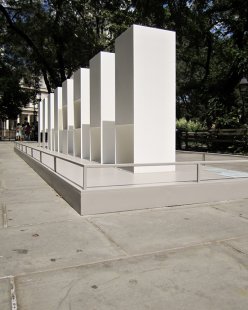
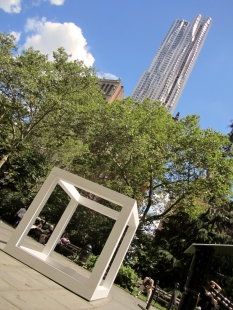
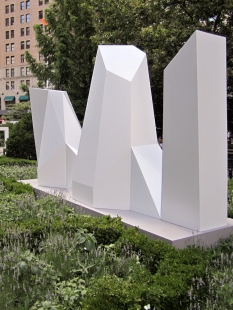
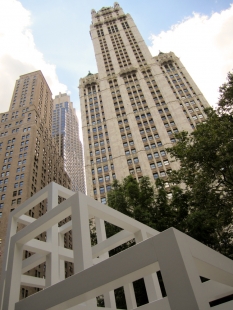

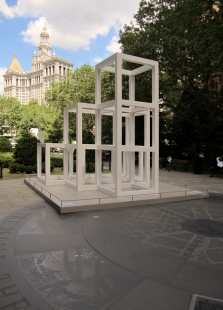
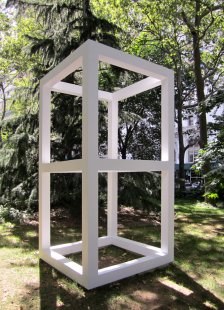
0 comments
add comment






